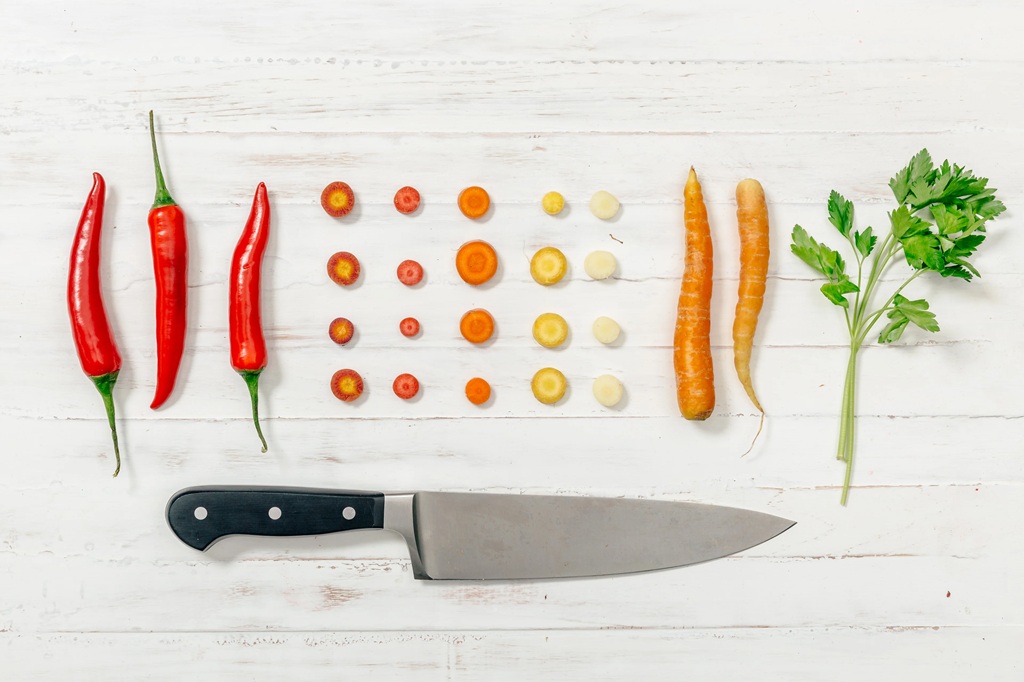When it comes to kitchen tools, few items are as indispensable as butcher knives and utility knives. Whether you’re a professional chef or a home cook, having the right knife for the job can make all the difference. These knives are designed to handle various tasks, from breaking down large cuts of meat to precise slicing and dicing. In this guide, we will explore the different types, uses, and maintenance tips to help you choose the best butcher knives and utility knives for your needs.
Understanding Butcher Knives
Butcher knives are essential for anyone working with large cuts of meat. They are typically larger than standard kitchen knives and feature a strong, sharp blade designed to handle heavy-duty tasks.
Types of Butcher Knives
- Breaking Knife – Used for breaking down large pieces of meat.
- Boning Knife – Designed for deboning meat with precision.
- Cimeter Knife – Ideal for slicing large roasts or steaks.
- Cleaver – A heavy-duty knife perfect for cutting through bone.
Uses of Butcher Knives
- Cutting large sections of meat into smaller portions.
- Trimming fat and sinew for a cleaner cut.
- Splitting bones using a cleaver.
Utility Knives: The Versatile Kitchen Tool
Utility knives are the go-to option for tasks that require precision but don’t necessarily need a specialized knife. They are smaller than chef’s knives but larger than paring knives, making them an excellent middle-ground tool for various kitchen duties.
Types of Utility Knives
- Straight-Edge Utility Knife – Ideal for clean, precise cuts.
- Serrated Utility Knife – Great for cutting through foods with tough exteriors and soft interiors, like tomatoes and bread.
Uses of Utility Knives
- Slicing fruits and vegetables with ease.
- Cutting sandwiches and delicate baked goods.
- Trimming and portioning smaller cuts of meat.
How to Maintain Butcher Knives and Utility Knives
Proper maintenance ensures your knives remain sharp and durable for years. Here are some essential care tips:
- Sharpen Regularly – Use a honing steel to maintain the blade’s edge and sharpen with a whetstone when needed.
- Hand Wash Only – Avoid dishwashers, as they can dull the blades and cause damage.
- Store Properly – Use a knife block, magnetic strip, or protective sheath to keep knives safe.
- Use the Right Cutting Surface – Wooden or plastic cutting boards help preserve the sharpness of the blade.
Conclusion
Butcher knives and utility knives are essential tools for both professional chefs and home cooks. With the right knife, food preparation becomes easier, safer, and more efficient. Understanding their differences, choosing the correct type for the task, and maintaining them properly will help you get the most out of these essential kitchen tools.
FAQs
Q: What is the main difference between a butcher knife and a utility knife?
A: A butcher knife is designed for heavy-duty meat cutting, while a utility knife is a versatile tool for smaller, more delicate tasks.
Q: How often should I sharpen my knives?
A: Regular honing should be done before each use, and sharpening should be done as needed based on usage.Q: Can I use a utility knife for cutting meat?
A: Yes, utility knives can handle small cuts of meat but are not ideal for heavy-duty butchering tasks.

